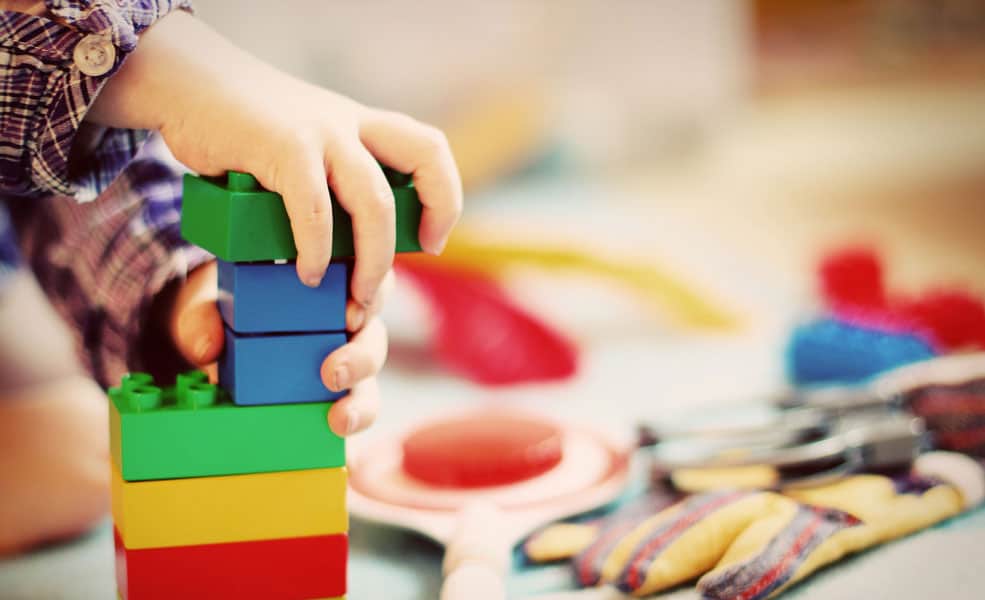Over a year ago we shared a post about hands on learning, what it means and why it is important. In the simplest definition, hands on learning is learning by doing. From that post we suggested the following areas to increase and incorporate hands on learning.
1. Blocks, Blocks, Blocks:
Building blocks like lego, wooden block sets, and other open-ended building toys are great. They have endless possibilities, they teach children problem-solving skills. The essentially encourage the process of having an idea, planning how to create it, implementing that plan, correcting where necessary, and implementing again. They get children to learn about geometry and physics. And when playing together blocks facilitate the development of essential social and collaborative skills.
2. Garden, Kitchen, Woodshop:
Get children involved in what feels like the everyday. For you making dinner might feel like a tired old chore, but for them, it is an opportunity to use new tools to learn about measurements and math, and more! The same can be said of gardening. And don’t be afraid to let your children do things like woodworking and sewing, you may be worried that the tools involved in some of these tasks are dangerous for them but you can always manage the activities so that harm is avoided and they are learning new skills. When taught properly, children can surprise you what they can do!
3. Art:
This is a common category of hands-on learning but a good one! Art is where creativity is expressed. Create an art space for your child that is always accessible with various art implements. Bring in recycled materials too. Let them create!
Benefits of Hands on Learning
Today we thought we would expand on this idea of hands on learning and discuss some of the benefits that come with having a hands-on focused practice in early childhood education.
- Activation of multiple brain areas: When activities require multiple processes such as movement, talking, sensory experience, and inquiry, multiple brain regions are activated. This can help expand and strengthen neural connections in the brain, which is essential in the early years of life, as these brain pathways are still being created and developing.
- Encouraging Interactions with Nature: Hands on learning often involves play with loose parts or outdoor play. This can encourage interactions with nature and further education into environmental processes.
- Sensory Development: As the name implies, hands on learning often involves the use of the hands in a direct, tactile way. This helps to encourage sensory development as children encounter different textures and materials in their learning experiences.
- Fine Motor Skills: Related to the last point, the use of hands in learning helps to develop fine motor skills associated with control of the smaller muscles in the hands. These skills are important for things like writing, manipulating materials, and more.
- Allows Learning from Experience: Experiential learning (learning from personal experiences) often forms the strongest imprints in long term memory. This means that the things children learn in a hands on setting stick in their brain better and for longer.
Because of the benefits listed above, and numerous others, hands on learning is often considered a more fun and engaging approach with real, lasting impacts in early childhood education. It allows children to develop their own love and appreciation for learning and to direct their experiences.
Sources: http://www.communityplaythings.com/resources/articles/2017/hands-on-learning and http://www.scholastic.com/browse/article.jsp?id=3751901 and https://appletreekindergarten.com/blog/benefits-hands-learning-children/

